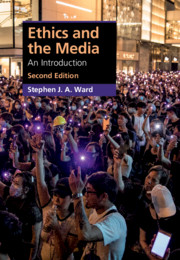Refine search
Actions for selected content:
8 results
6 - Values and ethics for critical practice
-
- Book:
- Engaging with Social Work
- Published online:
- 09 October 2025
- Print publication:
- 23 October 2025, pp 161-193
-
- Chapter
- Export citation
2 - Artists and the Art Market
-
- Book:
- Law, Ethics, and the Visual Arts
- Published online:
- 01 May 2025
- Print publication:
- 29 May 2025, pp 29-95
-
- Chapter
- Export citation
8 - Regulatory Rules
- from Part II - Design, Dynamics and Implementation
-
- Book:
- An Introduction to Law and Regulation
- Published online:
- 22 November 2024
- Print publication:
- 28 November 2024, pp 232-274
-
- Chapter
- Export citation
5 - On Virtue and Law
-
- Book:
- Virtue in Global Governance
- Published online:
- 28 July 2022
- Print publication:
- 11 August 2022, pp 124-149
-
- Chapter
- Export citation
Chapter 4 - Regulation of the professions: codes of ethics and standards of practice
-
- Book:
- Interprofessional Ethics
- Published online:
- 22 October 2021
- Print publication:
- 22 October 2021, pp 75-96
-
- Chapter
- Export citation
4 - Ethics, risk and health promotion
- from Part 2 - Effective communication
-
-
- Book:
- Health Promotion
- Published online:
- 29 July 2021
- Print publication:
- 25 June 2021, pp 81-105
-
- Chapter
- Export citation

Ethics and the Media
- An Introduction
-
- Published online:
- 22 October 2020
- Print publication:
- 05 November 2020
4 - Ethical Considerations for Human Remains
-
- Book:
- Human Remains
- Published online:
- 28 February 2020
- Print publication:
- 12 March 2020, pp 57-67
-
- Chapter
- Export citation
